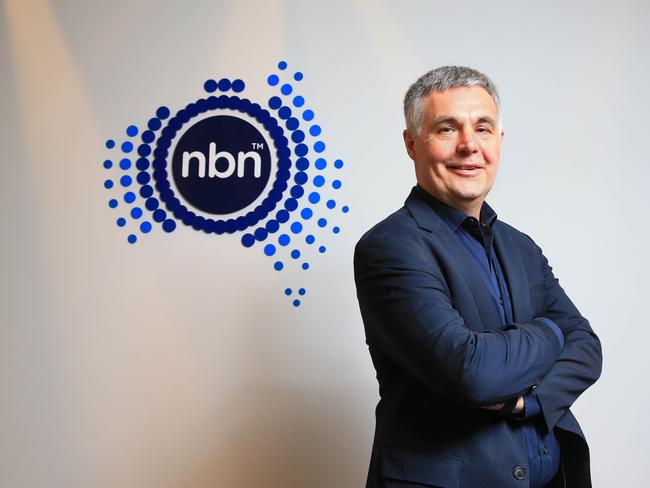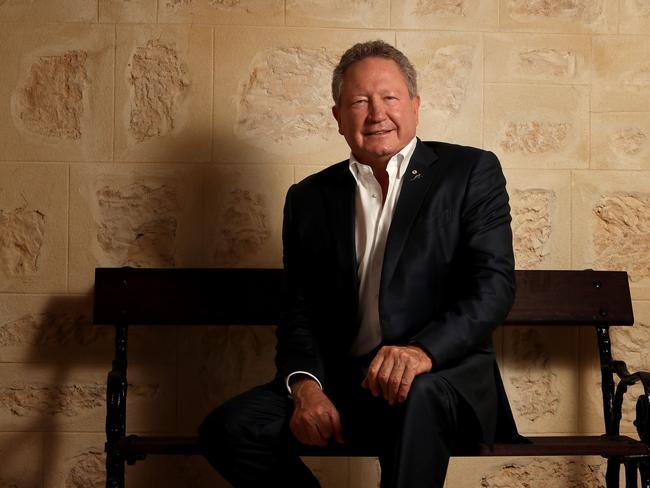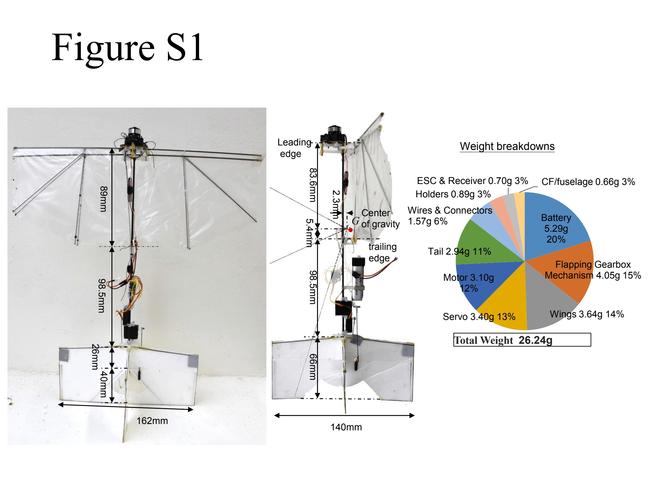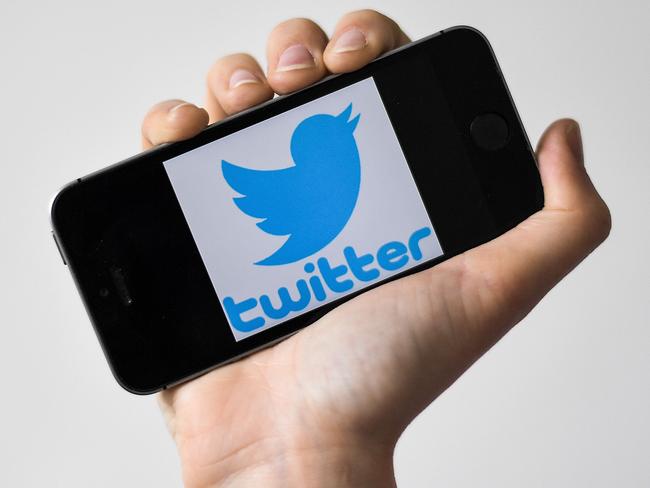NBN extends free COVID capacity
Telstra had been particularly vocal about extending the data giveaway, as NBN usage hits new records.

Welcome to The Download, The Australian’s technology blog for the latest breaking tech news.
4.10pm: NBN extends COVID capacity
NBN Co said it is extending its pricing relief for retailers, offering up to 40 per cent extra capacity until mid-September after facing pressure from providers including Telstra.
The government-owned company said on Friday it had already given almost $80 million worth of capacity to internet providers to date, in a bid to help them cope with extra demand stemming from the COVID-19 pandemic.
It will now extend that offer until September 19, giving providers four extra weeks of extra free bandwidth.
“This is the right thing to do,“ NBN Co chief customer officer Brad Whitcomb said.

“We trust the data capacity initiative will first and foremost support Australians’ heightened need for secure, high-speed access to broadband services at this critical time and, secondly, help give internet retailers the time and financial relief they need to adapt to their customers’ changing data demands.
“It is also important to recognise that the underlying annual growth in data demand has maintained a consistent trajectory, and it is this sustained growth, aside from any COVID-19 related impact, that requires a long-term, well-considered, industry-wide response.”
Telstra in particular had been vocal about NBN extending its capacity offering, declaring that the extra demand from remote work and learning would be permanent.
“The industry wide collaboration between RSPs, NBN Co and various content providers has played a key role in allowing these traffic increases to be absorbed painlessly,” a Telstra spokesman told The Australian this month.
“Given many people will continue to work and study from home for the foreseeable future, we think it makes sense to extend the 40 percent free allocation of CVCs for the locked down geographies for the time being or, as we and others in the industry have called for previously, for NBN Co to look at removing the CVC pricing structure altogether.”
NBN said on Friday that its network had reached new record levels of usage.
For the week from Monday July 13 to Sunday 19 July, peak download throughput during the busy evening period increased by 34 per cent to a new record peak of 14.8 Terabits per seconds on the main NBN wholesale network, compared to the pre-COVID baseline.
12.40pm: ‘Twiggy’ backs NBN provider
WA-based fixed wireless and NBN provider NodeOne has closed a capital raising, with billionaire philanthropists Andrew ‘Twiggy’ and Nicola Forrest pouring money in through their private company Tattarang.
The company, which was founded in 2009, offers internet across Perth, Bunbury, Geraldton and the Midwest and provides coverage to over 2 million people and has raised fresh funding to ramp up its footprint.
Andrew ‘Twiggy’ Forrest and Nicola Forrest have joined new investors the CVC Emerging Companies Fund and existing investors including founder Nick Van Namen and Amcom co-Founder, former Vocus Deputy Chair and iiNet Director, Tony Grist.

As The Australian reported this week Andrew Forrest’s wealth has reached new heights during the COVID-19 pandemic, with a series of record share price highs for his Fortescue Metals Group pushing his paper wealth to more than $20bn.
The mining magnate’s stake in the iron ore miner has increased by a whopping $11.6bn since markets around the world touched lows in mid-March amid global fears about the coronavirus.
“With the strategic investment and support of Tattarang and CVC, NodeOne is poised to invest in further fixed wireless coverage across Western Australia, leveraging our existing network,” NodeOne CEO Richard Whiting said.
“NodeOne is the largest fixed wireless provider in Western Australia with a rapidly growing market share and will use the funds to accelerate organic growth, expand our network and invest in our people.
“This investment will also allow NodeOne to expand our offering into the WA business market, with big business speeds at small business prices.”
CVC Emerging Companies Fund Portfolio Manager Jonathan Pearce said, “with a proven market presence and a growing customer base, NodeOne is an emerging leader in WA telco – CVC is excited to be supporting NodeOne’s future growth.”
8.30am: Apple delays iPhone 12 launch
Fans of iPhone will probably have to wait at least another month before shiny new models are unveiled.

Apple is delaying its annual early September iPhone launch event until the latter half of October, according to a tech blog.
The company was forced to push back the event for the 5G-compatible iPhone 12 line because of production delays caused by the pandemic, the Japanese Apple blog Mac Otakara reports.
Apple is expected to announce four new iPhones, with the 5G models available in November. Apple shares are up 26.5pc this year.
Dow Jones
8.20am: Facebook adds video calling
Facebook says it is rolling out a feature that lets users broadcast live a video call with up to 50 people.

Users can invite people to join “Messenger Rooms”, including those who do not have a Facebook account, for group video calls and then broadcast the room live on any profile, page or group on the platform, the company said.
The move bolsters Facebook’s efforts to grab a share of the coronavirus-driven boom in demand for video conferencing services, which has turned Zoom Video Communications into a household name.
Other technology companies have rolled out similar features to attract users, with Alphabet’s Google allowing users to host free video conferences on Meet.
Facebook says it is rolling out the feature in some countries on its platform and Messenger web now, and will soon expand to all countries where Messenger Rooms is available.
Live broadcasts from Facebook pages doubled in June compared with a year earlier due to a jump in livestreams since March, when several countries began imposing lockdowns and social distancing measures in response to the COVID-19 pandemic.
The Facebook blog is here.
Reuters
Chris Griffith 8.10am: Research team designs flapping wing drone
An international research team including South Australian engineers has designed a drone that has flapping wings like a bird.
The research team from South Australia, Singapore, China and Taiwan says the 26g “ornithopter” flapping wing aircraft can hover, dart, glide, break and dive just like a swift – one of the world’s fastest birds.

They say the flapping motion makes it more versatile, safety and quieter than an existing quadcopter drone.
UniSA aerospace engineer Professor Javaan Chahl says copying the design of birds, like swifts, is one strategy to improve the flight performance of flapping wing drones.
“There are existing ornithopters but, until now, they were too inefficient and slow to be agile. We have overcome these issues with our flapping wing prototype, achieving the same thrust generated by a propeller,” Professor Chahl says.
He says that by improving the design so ornithopters can now produce enough thrust to hover and to carry a camera and accompanying electronics, the flapping wing drone can be used for crowd and traffic monitoring, information gathering and surveying forests and wildlife.
7.40am: Twitter adds users but revenue and profit fall
Twitter has reported strong user growth but experienced lingering impacts from the coronavirus pandemic in its latest quarter, as the company navigates a rocky advertising climate and the fallout from a major security breach.

On Thursday, the San Francisco social media company said its daily user base rose 12pc to 186 million in the three months ended June 30 from the quarter before, a stronger increase than analysts polled by FactSet had expected.
Twitter’s revenue fell 19pc in the second quarter from a year earlier to $US683 million, missing the consensus estimate from analysts of $US702 million, according to FactSet. In the previous quarter, Twitter declined to provide forecasts for revenue or operating income, citing virus-related economic uncertainty and rapidly shifting market conditions. For the same reasons, the company didn’t provide guidance for those metrics in its latest earnings report.
The company swung to a loss of $US1.23 billion, noting that its results were impacted by a reversal of a more than $US1 billion tax benefit recorded in 2019. Excluding the tax item, Twitter’s loss was steeper than analysts had forecast.
“Our number one priority is making sure our road map is strong and moving fast,” Chief Executive Jack Dorsey told analysts on an earnings call. “This quarter is a great example where you saw a lot of under-the-hood work.”
The Wall Street Journal



To join the conversation, please log in. Don't have an account? Register
Join the conversation, you are commenting as Logout